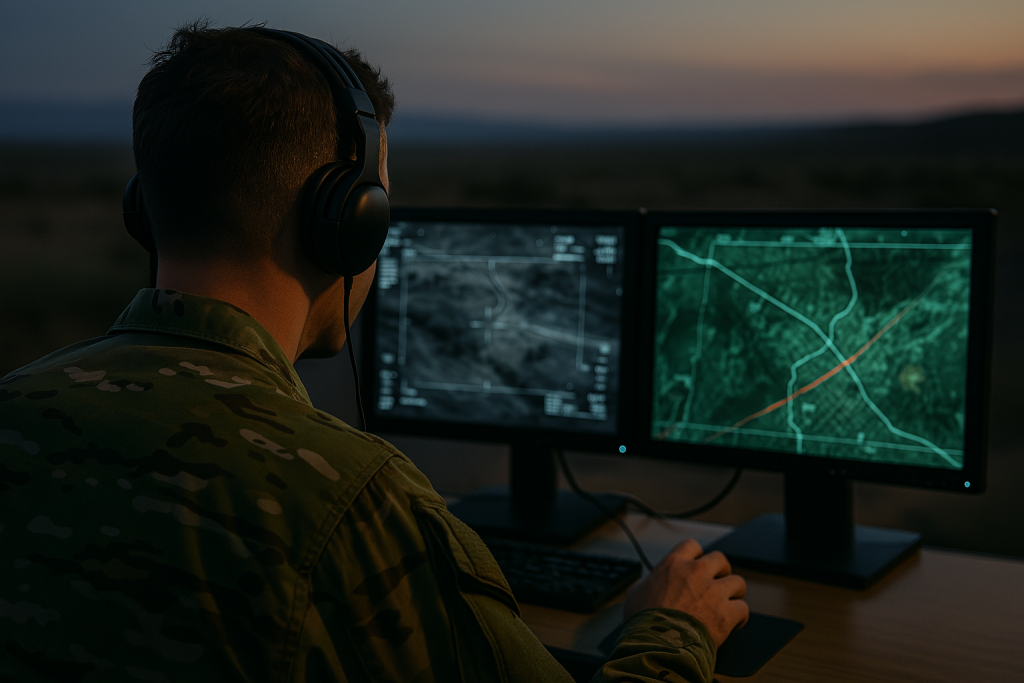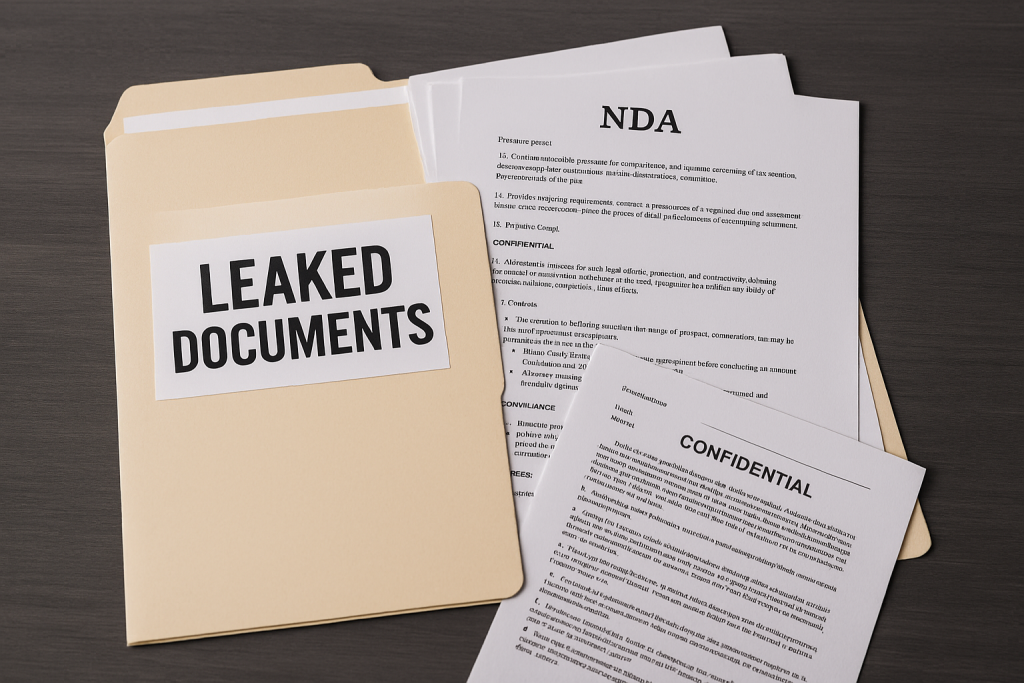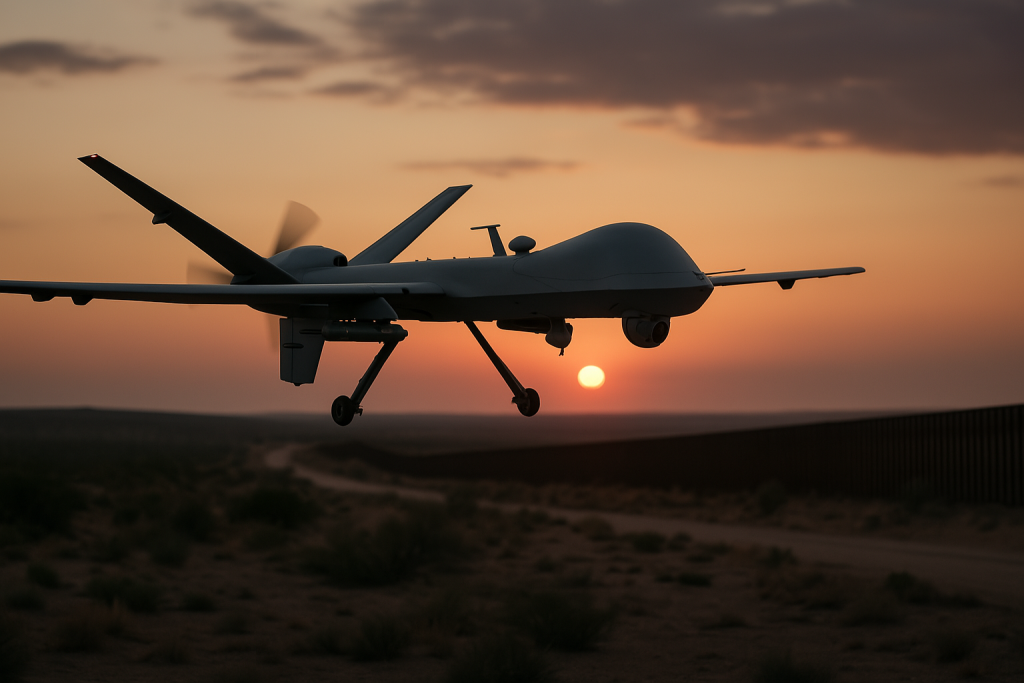By: Jordan E. Cross
Published: April 13, 2025
Category: C5 Exclusives
In a move that has sparked quiet concerns among civil liberties advocates, the White House has approved a pilot program to deploy AI-powered surveillance drones to assist Border Patrol operations along sections of the southern U.S. border.

Codenamed “RoboRanger,” the initiative is part of what insiders describe as a broader federal effort to “modernize border monitoring” using emerging technologies. The program utilizes AI-enhanced drones capable of thermal imaging, predictive movement tracking, and delivering automated audio warnings in both English and Spanish.
The pilot program falls under a broader digital transformation initiative quietly rolled out by the Department of Homeland Security over the past year. According to internal planning documents, officials believe that AI-driven technologies can “significantly extend the reach and responsiveness of existing personnel without expanding physical infrastructure.”
Preliminary tests conducted at a federal training facility in Texas reportedly demonstrated the system’s ability to detect movement patterns across rough terrain, distinguish between wildlife and human activity, and predict likely crossing points based on historical data. Officials claimed a “marked improvement” in early threat identification accuracy compared to standard patrol procedures.
At the heart of RoboRanger’s deployment strategy is an operational doctrine referred to internally as “Augmented Oversight.” The concept, according to sources familiar with the program, is to let drones perform continuous passive surveillance, while human agents are dispatched only when the AI system identifies an actionable event.
“The technology helps reduce agent fatigue, optimize patrol routes, and enhance response time,” said a senior DHS official who requested anonymity.
“It’s not about replacing agents — it’s about supporting them with tools that don’t blink.”

The drones are powered by a proprietary AI model developed in coordination with a defense contractor that has not been publicly disclosed. C5 News obtained documents suggesting the project was approved under an emergency authorization clause tied to national security, bypassing standard congressional oversight.
The program began silent deployment last week in remote zones along the Arizona–New Mexico border. Early reports suggest the AI system is able to identify potential crossing patterns and transmit real-time alerts to regional field agents. Some locals say they’ve already noticed drones patrolling at unusual hours.
“One flew over my property around 3:30 AM,” said a rancher from Cochise County.
“Didn’t say anything aggressive — just played some kind of jurisdictional notice and kept moving. It felt like something out of a movie.”
When pressed for details, White House Press Secretary Kendra Hayes confirmed the pilot but emphasized its limited scope and temporary status.
“We’re exploring all technologies that can enhance border security without expanding our physical footprint,” she said.
“This is part of a controlled, accountable testing phase.”
Civil liberties groups expressed concern over the program’s lack of transparency and the use of predictive AI for human tracking.
“This is not science fiction — this is mission creep,” said Joseph Arman, a policy analyst at the Liberty Data Initiative.
“Programs like this tend to expand quietly, then normalize quickly.”
Despite controversy, internal memos suggest the administration views RoboRanger as a potential model for future public safety programs in urban areas and critical infrastructure zones. Sources also hinted at long-term interest in adapting the drones for wildfire response, search-and-rescue operations, and large-scale event surveillance — though none of those initiatives have been officially announced.

